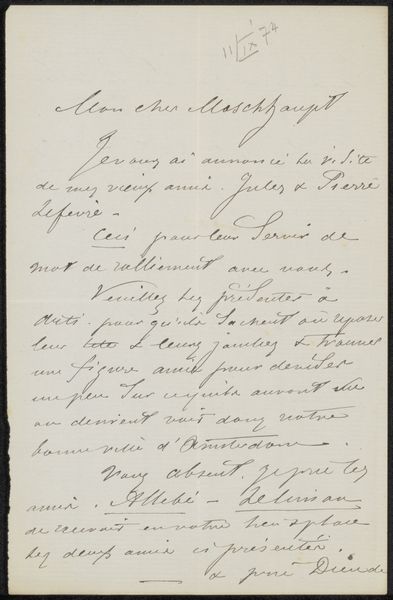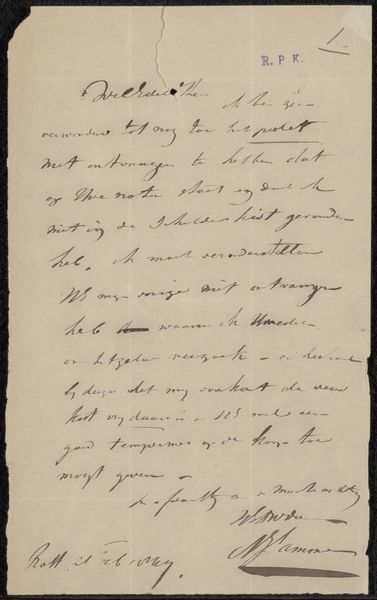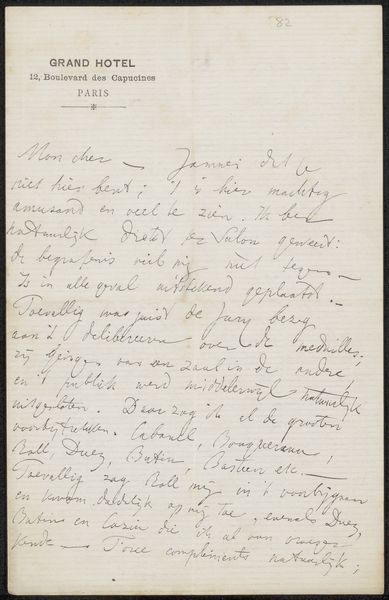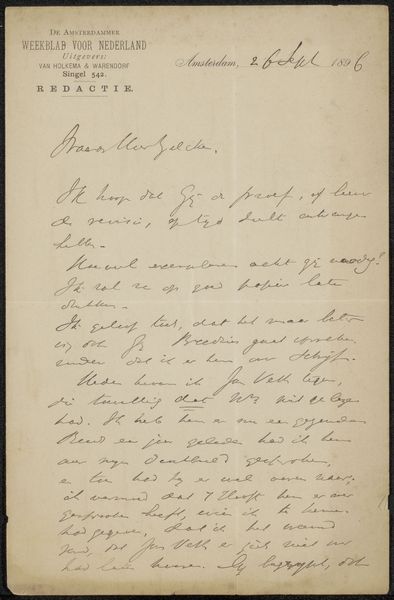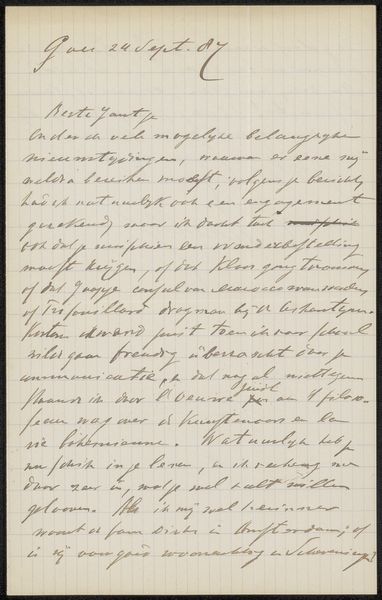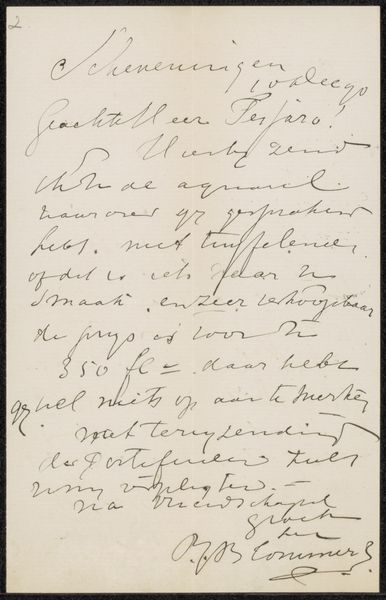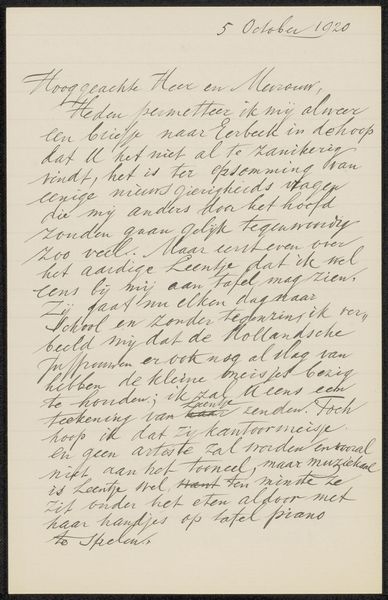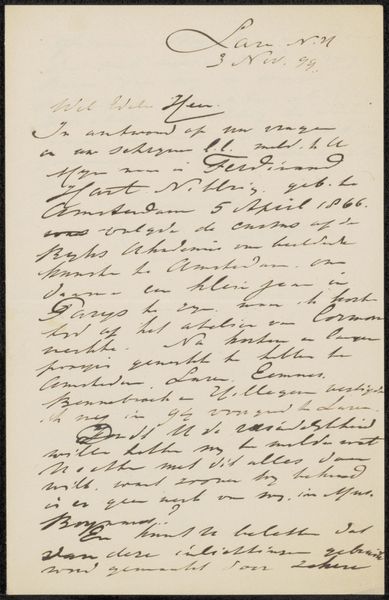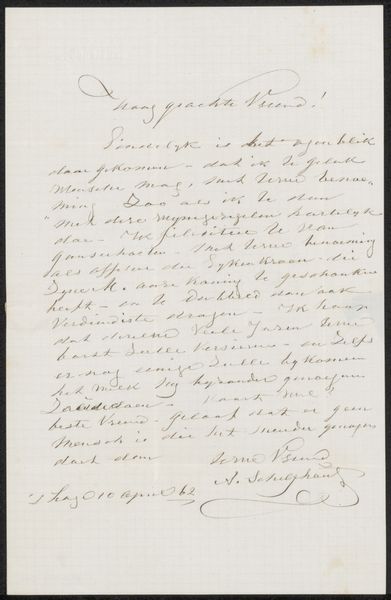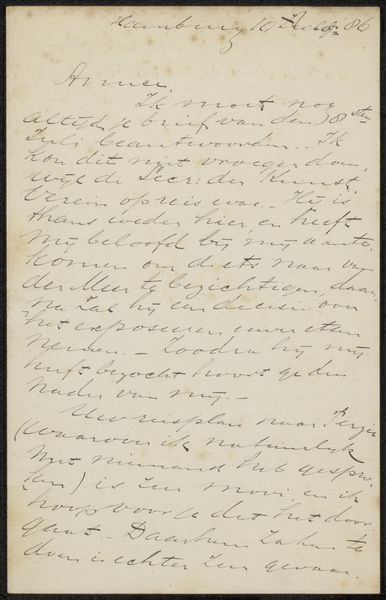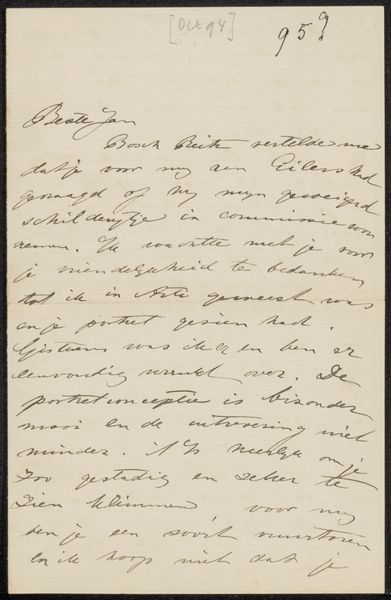
drawing, paper, ink
#
drawing
#
paper
#
ink
Copyright: Rijks Museum: Open Domain
Curator: A captivating glimpse into the past, this is “Brief aan anoniem,” or “Letter to Anonymous,” rendered in ink on paper by Anton Mauve in 1887. It resides here with us at the Rijksmuseum. Editor: It has a somber, quiet feel about it, you know? All this graceful script fading into the creamy paper. It makes me wonder who wrote it, and who might've anxiously waited to receive it. Curator: Its very anonymity adds layers of meaning, doesn't it? The letter becomes a symbolic placeholder for countless unspoken dialogues from the era, especially considering the social hierarchies dictating so much interaction. The address is simply “Laren Nor. 67". Mauve's choice to obscure the intended recipient prompts us to contemplate power dynamics intrinsic within artistic and epistolary exchanges. Editor: Power dynamics, yes! Was the recipient another artist? Maybe someone Mauve looked up to, or perhaps someone who held sway over his career? It could even be a supplier struggling with the cost of paints. A plea for cheaper cadmium yellow, perhaps! I bet every single crease and smudge has a story if we knew how to read them. Curator: Precisely! Viewing this piece through a lens of feminist theory or class-conscious art history encourages critical analysis. This challenges conventional readings of nineteenth-century art to recognize broader societal constraints surrounding marginalized groups. We could ponder how this anonymous recipient existed, or *didn’t* exist within systems reinforcing gender and financial inequality at the time. Editor: That's deep. Though on the other hand, I kind of like the mystery of it. Makes it universal in a way. It’s like eavesdropping on a secret someone meant for the world to see… eventually. Curator: Ultimately, this piece demonstrates how deeply embedded are socio-political narratives within visual culture. By engaging the artwork using a broad and analytical scope, new and essential insights can reshape our understanding. Editor: Yes, and even if it's a mundane note asking for art supplies, at least Mauve’s delicate, intimate touch reminds us that art history's made of everyday conversations and people too.
Comments
No comments
Be the first to comment and join the conversation on the ultimate creative platform.

